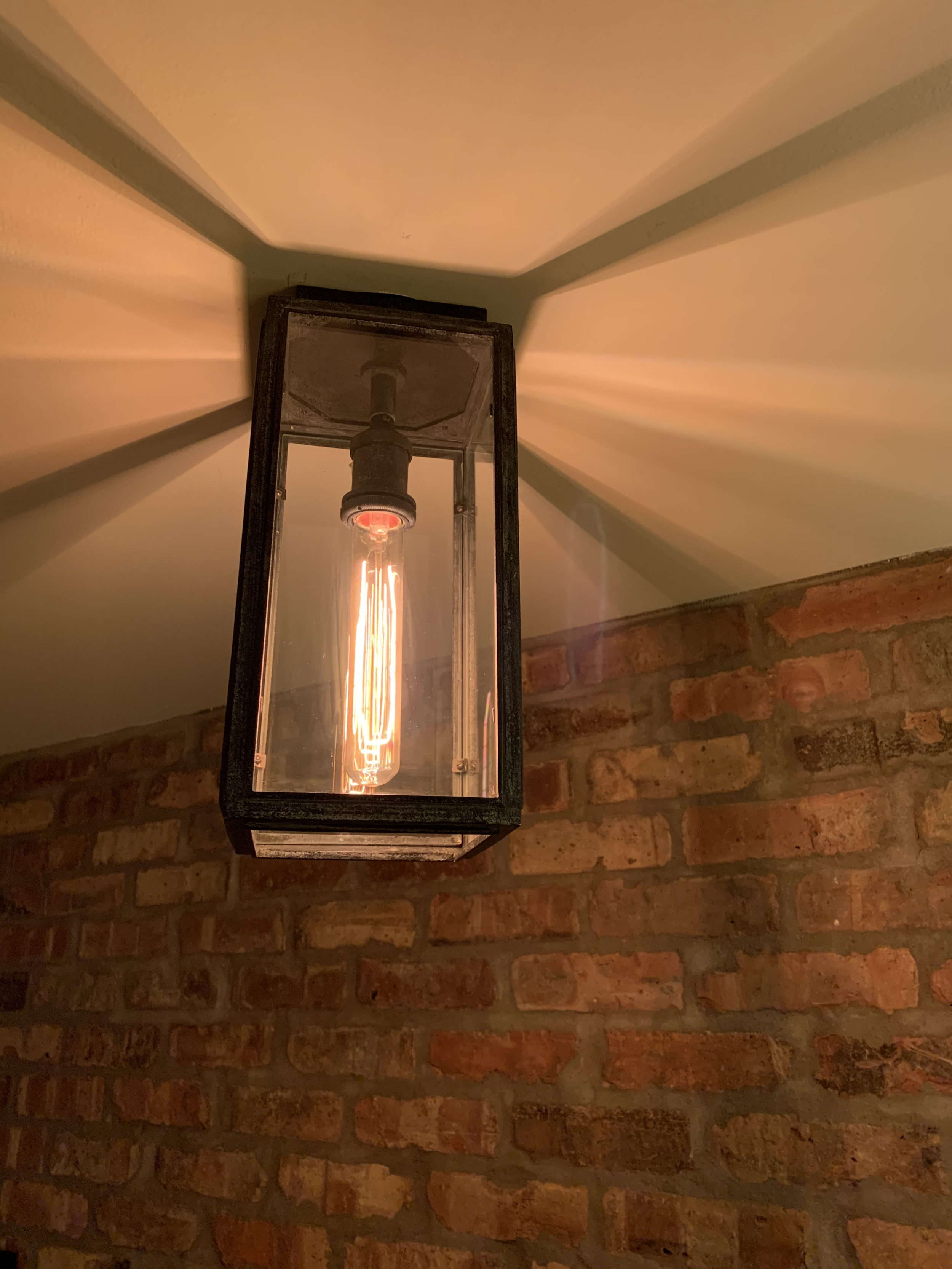Retro-Filament Bulbs
We stayed at a hotel a while back that had a strong retro-industrial design motif. Lots of ironwork and woodwork and pictures of serious, mustachioed men standing on enormous iron machines. One of the more curious choices about the hotel was the use of a retro-filament bulb in the entryway light fixture of our room: a clear bulb that houses a looping tangle of wire so hot it glows yellowish-white. It harkens back to the early days of electrification; certainly blending well with the theme of the hotel.
Retro-filament bulbs are a solution to the problem of darkness that actually creates another problem: the filaments are hard to look at when they’re on. Which is a shame, because that particular problem has already been neatly solved for a long, long time.
The problem with this design isn’t really the filament, of course, all incandescent bulbs have them; it’s the clear bulb that ensconces it. Frosted bulbs (and lampshades, for that matter) were created to more evenly disperse light, making shadows less pronounced—and making them much less harsh to look at. It’s uncomfortable to look at a filament when it’s bright enough to cast a useful amount of light. So to add pragmatic insult to potential retinal injury, if you dim that bulb’s eye-searing, eye-watering, eye-blinding luminosity enough that you can comfortably admire its warm glow, it’s not really bright enough to also be able to, say, read by. Or even just find your hat or shoes. The irony of this quaint design is that a few experiences of accidentally looking directly at it discourages you from ever doing it again, completely defeating the aesthetic. It would be like using a chef’s knife that was sharpened along both sides and had no handle.
If sales of these retro bulbs are strong, it’s likely due to the seductive marketing and the quaint beauty of the photographs of them; not the actual experience of being in a room illuminated by one. It’s good to consider how a design that is supposed to be both functional and beautiful can fail at both in practice but succeed magnificently in photographs. After all, it’s easy to fall in love with a picture of a thing—all of the harsh features removed, posed in an idyllic scenario constructed to highlight the warm feeling you’ll supposedly experience in its presence. But looking at a picture of the sun is not like looking at the sun.

